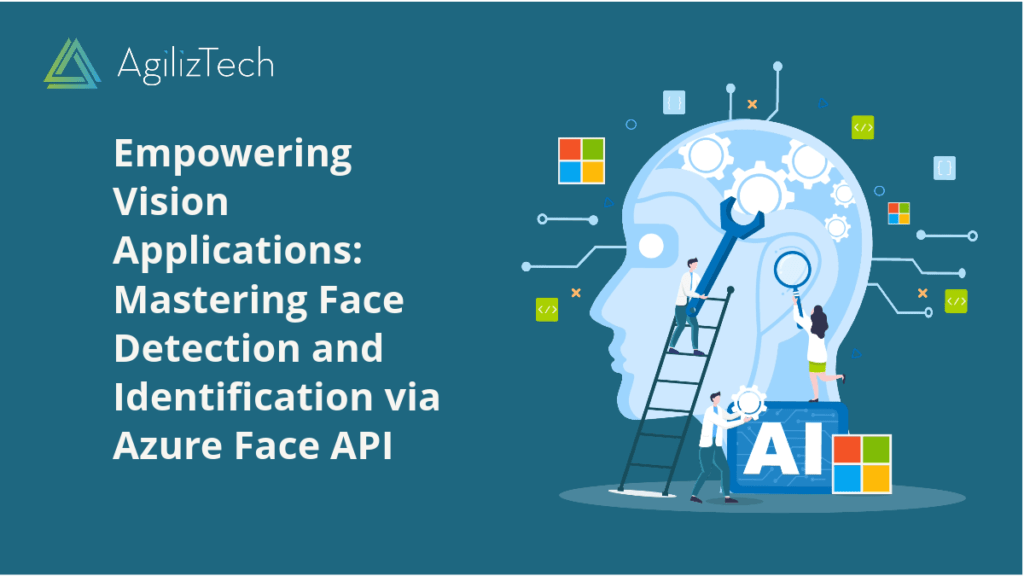
Azure Face API: Mastering Detection and Identification
Have you ever wondered how some apps can recognize faces in photos and videos? How do they detect each face’s location, size, and angle? How do they identify the person’s name, age, gender, emotion, and other attributes? These are some of the questions Azure Face API can help you answer.
Azure Face API is a cloud-based service that provides advanced face detection and identification capabilities. You can use it to build applications that can analyze faces in real-time or offline, and perform tasks such as face verification, face grouping, face recognition, and face similarity.
This blog post will give you an overview of Azure Face API, its features, benefits, and applications in various scenarios. Using a simple example, we will also show you how to get started with Azure Face API.
Overview
Azure Face API is part of the Azure Cognitive Services suite, which offers AI-powered services that can help you add intelligence to your applications. It is based on state-of-the-art machine learning models that can process millions of faces daily with high accuracy and speed.
Azure Face API provides two main functionalities:
- Face detection: Locating and extracting faces from images or videos. Azure Face API can detect up to 100 faces in a single image and return each face’s coordinates, size, and angle. It can also detect face landmarks, such as eyes, nose, mouth, and ears, and return their positions and sizes. Additionally, it can detect face attributes, such as age, gender, emotion, hair color, glasses, facial hair, makeup, and accessories.
- Face identification: The process of matching faces to known identities. Azure Face API can identify faces from a large-scale database of people you create and manage. You can use it to perform tasks such as face verification (checking if two faces belong to the same person), face grouping (clustering similar faces together), face recognition (finding the name of a person from a face), and face similarity (finding the most similar faces to a given face).
Benefits of Azure Face API
Azure Face API offers several benefits for developers and businesses who want to add face detection and identification capabilities to their applications. Some of these benefits are:
- Easy to use: Simple and intuitive REST API that you can call from any platform or language. You can also use SDKs for popular languages such as C#, Java, Python, Node.js, and Go. Moreover, you can use the interactive testing console to try out the API without writing any code.
- Scalable and reliable: Handle large-scale workloads with high performance and availability. You can scale up or down your requests based on your needs and pay only for what you use. You can also rely on the security and compliance of Azure cloud services.
- Customizable and flexible: Allows you to customize your face detection and identification models according to your specific requirements. You can create your face database with your labels and metadata. You can also train your face recognition model with your data using the Custom Vision service.
- Powerful and accurate: Uses advanced machine learning algorithms to detect and identify faces with high precision and recall. It can handle various challenges such as occlusion, pose variation, illumination change, expression change, aging effect, makeup effect, and accessory effect.
Application of Azure Face API
Azure Face API can be applied in various scenarios that require face detection and identification capabilities. Some examples are:
- Authentication and access control: Verify the identity of a user based on their face. For example, you can use it to unlock a device or an app, grant access to a building or a room, or authorize a transaction or an action.
- Social media and entertainment: Enhance the user experience of social media and entertainment apps. For example, you can use it to tag friends in photos or videos, create personalized filters or stickers based on face attributes or emotions, or generate realistic avatars or animations from faces.
- Education and training: Improve the quality of education and training programs. For example, you can use it to monitor the attendance and engagement of students or trainees based on their faces, provide feedback or guidance based on their emotions or expressions, or create interactive quizzes or games based on their facial recognition skills.
- Healthcare and wellness: Support the health and well-being of patients or customers based on their faces. For example, you can use it to diagnose or monitor certain medical conditions or symptoms based on facial features or changes, provide personalized recommendations or treatments based on facial attributes or emotions, or create relaxing or stimulating environments based on facial feedback.
Conclusion
Azure Face API is a powerful service that can help you add face detection and identification capabilities to your applications. It offers easy-to-use, scalable, reliable, customizable, and accurate face detection and identification models that handle various challenges and scenarios. You can start by creating a free Azure account and following the quickstart guide. You can also explore the documentation and samples to learn more about the service and its features.



